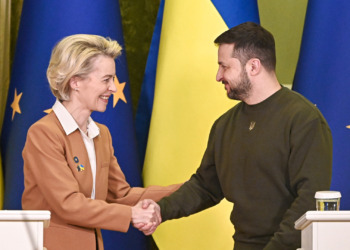This week, thousands of pagers believed to be held by members of Hezbollah exploded in Lebanon and the Syrian capital, Damascus, over about an hour. The next day, thousands of walkie-talkies did the same.
Israeli intelligence is believed to be behind the attack but, as yet, has not confirmed its involvement.
Hezbollah had been utilising such low-tech solutions for communications because Israeli surveillance systems would have otherwise been able to track and target their movements.
The attacks, which killed more than 35 people and injured thousands more, raises the potential of a larger regional war between the Hezbollah militant group and Israeli forces.
US Secretary of State Antony Blinken has called for all sides to de-escalate, claiming it threatens to derail a broader peace deal between Israel and Hamas.
The call to step back from the brink was supported by UN Secretary-General Antonio Guterres, who expressed concerns about a potential escalation of the conflict and the use of civilian objects to strike targets preemptively.
“I think it’s very important that there is effective control of civilian objects, not to weaponise civilian objects. That should be a rule that everywhere in the world governments should be able to implement,” said Guterres.
Wider implications
However, the implications of these attacks are likely to extend far beyond this conflict, fundamentally altering what is considered an international norm on the battlefield.
The weaponisation of everyday objects may be just the beginning.
Olga Boichak from the University of Sydney told 360info’s Leave It To The Experts that the style of attack, while surprising, is not unexpected.
“Given the trajectory of the pathways in which information warfare and hybrid warfare has developed over the past years, … we’re probably witnessing this next stage of weaponisation of everyday tech,” Dr Boichak said.
Oftentimes, the goal of hybrid warfare is to disrupt adversarial communication systems while something else is taking place. This dual goal was achieved, in essence, through the communication systems where the networks were disrupted.
“And then the same things that were used to disrupt communication networks were used to incur bodily damage to the combatants, that definitely represents an extremely new development on more than one front.”
There have been a growing number of instances where existing technologies and infrastructures have been weaponised against their users such as in Russia’s invasion of Ukraine, and accusations of China’s tactics against Taiwan.
Related Articles: Is There Hope for a Peace Model in the Middle East That Could Be a Template for Gaza? | Gaza War: From Extreme Violence To Human Kindness | Restricted Local Food Production Exacerbates the Humanitarian Crisis in the Gaza Strip
However in this attack, the subtlety of hybrid tactics used to take out Hezbollah’s communications network has instead given way to concerns that identification of the targets could not be confirmed before detonation.
Dr Boichak says any identification or due diligence of that would be difficult to prove.
“In many places around the world, there are attempts to weaponise certain technologies against their users, especially if those users could be reliably considered to be adversaries,” she said.
“Some of them are extremely problematic because a lot of the time, and this was one of the critiques of the Hezbollah strike, is that the identity of the people who were mutilated or killed was actually never confirmed. And while there are claims that each and every one of those fighters was a Hezbollah fighter or Hezbollah militant, we also do not know personally who those people were. It’s really difficult to prove that. The boundary between civilian and combatant is sometimes a little blurred.”
Challenge to international law
The legality of these attacks remains under question.
Speaking with 360info’s Leave It To The Experts, Dr Tamer Morris from the University of Sydney believes that international law and the rules of armed conflict are up to the challenge
“The problem is enforcing that law. States use political means to get around the law. That’s when it becomes problematic. But the law itself has the ability to manage and kind of evolve with modern conflict,’’ Dr Morris said. “The problem with the current, international system is that states use the law as a sword and not as a shield. Unfortunately, international law has mixed very much with what I call political morality. We support one side over another, and so we’re willing to justify the attacks of one because of morality rather than law. But the law is supposed to remain objective.”
“These rules protect civilians who have nothing to do with the situation. And so again, I think it does have the ability. It just needs the international community to adhere to International humanitarian law standards and not play the political game of who do we support,” Dr Morris added.
** **
This article was originally published by 360info™.
Editor’s Note: The opinions expressed here by the authors are their own, not those of Impakter.com — Cover Photo Credit: Wikimedia Commons.









